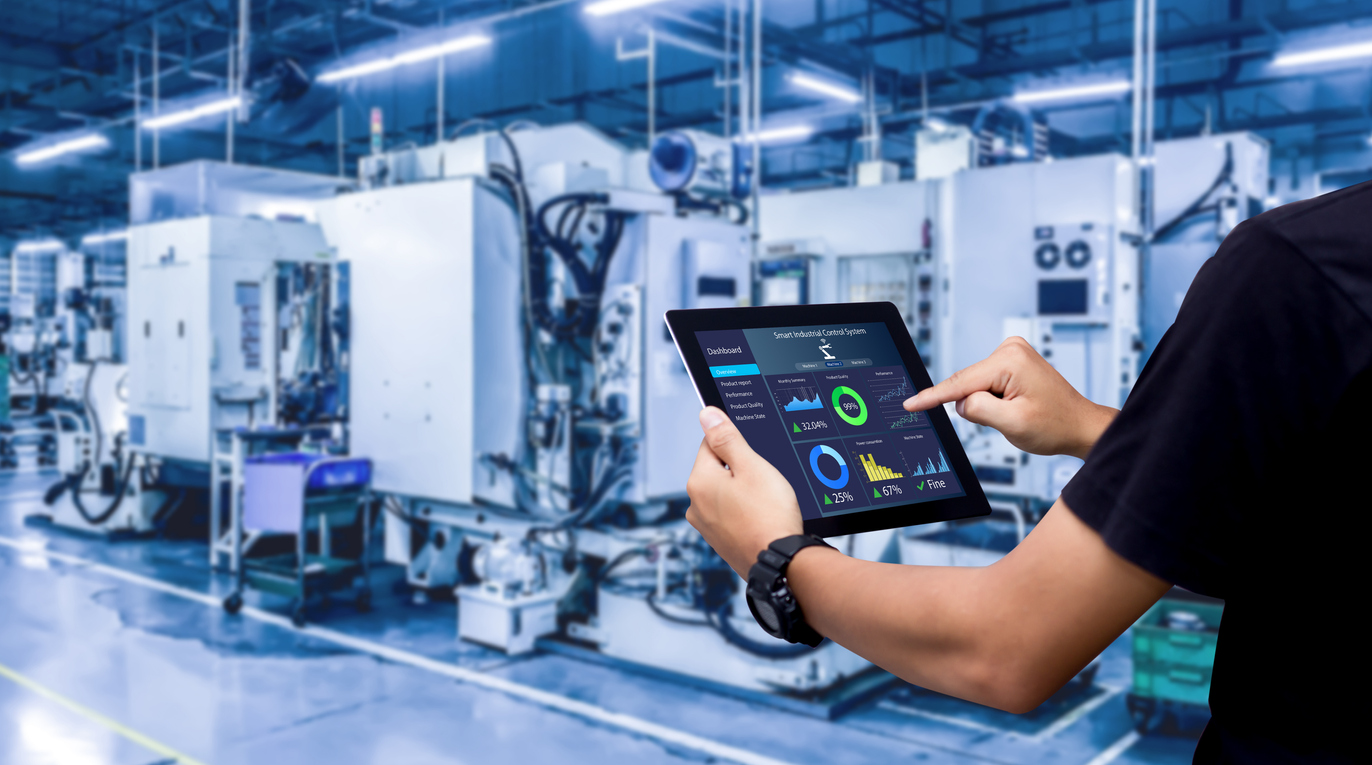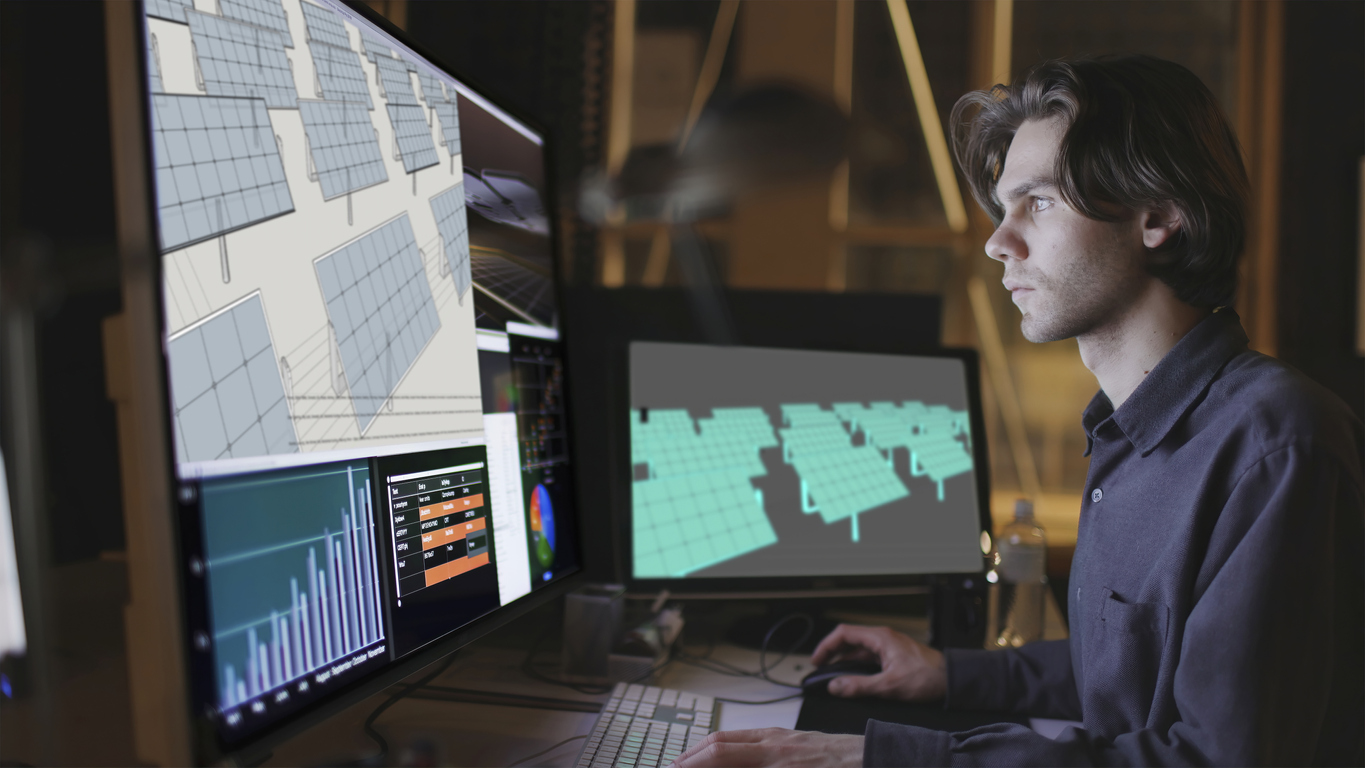Manufacturing change for the planet
As one of the biggest emitters, the built industrial environment cannot stand still in the race to net zero. But solutions abound

The clock is ticking for the built environment to reduce its carbon emissions, particularly in manufacturing, where energy wastage means overall efficiency is compromised and net-zero targets are under threat.
In fact, some 70% of carbon emissions worldwide can be linked to infrastructure, of which the built environment contributes around 38%.
In the UK, infrastructure is responsible for more than half of the UK’s total carbon emissions. The recent House of Commons Committee report into carbon in construction makes the case for urgency: “Emissions from the built environment must be reduced if the UK is to meet net zero by 2050… pressingly, the UK’s Sixth Carbon Budget requires carbon emissions to be reduced by 78% by 2035, compared to 1990 levels”.
This pathway for Carbon Budgets has been in place since the Climate Change Act of 2008 – and the science has been clear for far longer, with the IPCC first reporting in 1990. So why are the emissions of the manufacturing, construction and built environment sectors, still so high?
Jim Hall, trustee for carbon and climate for the Institution of Civil Engineers (ICE), believes that there is “no one reason” but ascribes it in part to the fact that “much of our infrastructure is old, and was built in times when considerations around net zero weren’t there. But we have also been slow to innovate and adopt new ways of working…. carbon is woven into almost every aspect of infrastructure currently. But, that doesn’t mean we can’t, and won’t, find new ways of approaching things.”
Nature-based solutions
The Climate Change Committee’s (CCC) 2022 progress report to Parliament told of “lagging behind” with “signs that delivery timelines are starting to slip” in the manufacturing and construction sectors. Hall describes the CCC report as “a stark warning”, and highlights the potential for greener solutions including retrofit, reuse, and ‘build nothing’ options, plus removing fossil fuel consuming products from all new and retrofitted projects.
Nature-based solutions and green infrastructure need to be brought to the fore, too. “On an industry level, we need to be thinking about the materials we use”, says Hall. “The manufacture of cement and steel are both highly energy intensive. We need to find alternatives which are equally robust and available”.
Cement alternatives include alkali-activated cementitious materials (AACMs), made from a mix of source alkali (calcium oxide) and aluminate-rich industrial by-products such as blast-furnace slag and fly ash – this was used in a recent upgrade to Chatham train station in Kent, achieving 83% CO2 savings compared with traditional concrete. Another alternative is hempcrete, made from 30% lime and 70% hemp crop, and believed to be carbon negative due to the carbon absorbed by hemp as it grows. An M&S 42,000m² superstore in Cheshire Oaks is clad with hempcrete panels.
Green building codes
New building codes and standards play an important role, too. PAS 2080 for example is a UK-made but globally-applicable standard for managing carbon in building and infrastructure. HS2 engineers achieved a 27% reduction in structural steel use for Old Oak Common station, equating to 2,700 tonnes of carbon and a cost saving of £7m, by following the standard.
Anglian Water also achieved a company-wide 61% reduction in capital carbon and a 22% reduction in capital expenditure with PAS 2080 certification. While other industry initiatives such as the new Built Environment Carbon Database (BECD) set out the actions needed to get to a net zero future, with benchmarks and case studies.
Internationally, however, Victoria Burrows, director, Advancing Net Zero, at the World Green Building Council (WGBC), explains that “many building codes do not reflect the level of ambition required to deliver high performance buildings, and one of the biggest challenges is the renovation of existing buildings to meet today's standards. So, as we continue to build, unless we drastically increase renovation rates, we are further contributing to the problem.”
She adds that “the average timeframe of bringing a new project to market can be several years, so it would be a long time before we see improvements reflected in the sector's emissions. This is why we need to act now, to ensure that every project being designed today is optimised for performance and whole-life carbon.”
Choose lower-carbon materials
The WGBC recently released its Global Policy Principles for a Sustainable Built Environment which outline the key policy levers that could help reach the goals of the Paris Agreement, including minimising the use of primary materials by promoting circular economies, and avoiding development on land with high biodiversity. In particular, Burrows calls for “innovations in building materials, technologies and design approaches that make it easier to choose lower carbon options, and ultimately reduce how much energy we consume – and waste – in our buildings.
“At a building level, this could include electrification, buildings as prosumers – producing more energy on-site than they consume – and deep renovations. At a district or city scale, this could require transition from gas networks and other fossil fuel sources, district heat capture, community grids and resource sharing”.
A report published by global engineering company Danfoss estimated that in the EU alone, excess heat lost from buildings and manufacturing was equal to 2,860 TWh a year, almost equal to the EU’s total energy demand for heat and hot water. When you zoom in to individual urban areas, the potential becomes even clearer. Essen, in Germany, hosts approximately 50 industrial sites that collectively produce 11.98 TWh of excess heat per year. This is roughly the amount of heat required to heat 1.2m households.
In Europe, where heating is largely generated by burning fossil fuels and accounts for over 50% of annual energy consumption, reusing such excess heat could be transformative. This can be done within buildings by using heat recovery units, or across urban areas via district heating networks that combine heat from multiple sources and distribute it through pipelines to end users.
Unearthing operational energy savings
In Ireland for example, Amazon Web Services has linked its data centres to a district heating scheme in Tallaght, South Dublin, which will provide heat for 47,000 m2 of public sector buildings, 3,000 m2 of commercial space and 135 affordable rental apartments. The UK meanwhile is home to over 450 data centres, all producing excess heat which is – currently – largely going to waste.
At a corporate level, organisations need to better understand their energy use before they can begin to adequately reduce it. “Carry out energy audits of your existing facilities”, advises Burrows, “install Building Management Systems (BMS) and conduct Whole Life Carbon Assessments (WLCA) on all new development projects.
This data can allow you to make informed decisions about where you can make energy efficiency and carbon savings — from LED lighting, to HVAC upgrades, access to renewable energy, and low carbon material choices.” More detailed advice is available from the local Green Building Council network, tailored to each specific market.
“Changing the way we do things will take time”, admits Hall at ICE, “so we need to give careful consideration of the types of projects which are approved, taking into account the impact they might have down the road.” He offers an example that takes ‘down the road’ literally. “In Ireland, we are seeing the government significantly shift some of its investments from road projects to public transport projects such, as metro or bus routes”.
Such decisions, that take an existing budget and re-prioritise it – or an existing asset and repurpose it – for lower-carbon alternatives, can both impact carbon emissions immediately, and for decades to come.
The digital twin: the c-suite's secret energy-saving weapon
Virtual simulations and real-world data can show senior leaders how low energy construction will help them to save energy

While Building Information Modelling (BIM) has been transformative for the construction sector, David Philp, chief value officer at Cohesive, a leading digital engineering practice, says that the digital twin, turbocharged by Artificial Intelligence (AI) and the Internet of Things (IoT), “will enable industry to plan new infrastructure more effectively, build it at lower cost and operate and maintain it more efficiently”.
It is a view shared by Dale Sinclair, who is Head of Digital Innovation at WSP, one of the world’s leading engineering and environmental consulting firms. However, he concedes that in architectural and construction circles, the digital twin has “not been as widely utilised as it has been in the automotive and aviation sectors”.
But why? Sinclair, an architect of 30 years, says that "in a nutshell a digital twin relies on high-power sensors, which collect and harvest data”.
Sinclair explains, “While automakers have understood how to harness the power of data for some time, buildings are quite different to cars. There aren’t that many sensors, except those leveraged for FM, that actually provide a rich seam of data. So, while the digital twin has great potential, I think such simulation modelling is still very much in its infancy in the architectural and built environment space.”
Dr Rob Shipman, associate professor at the University of Nottingham, largely agrees with Sinclair. Shipman, who is using IoT and Machine learning technology to support the current energy transition, says that many c-suite managers confuse the digital twin with the digital shadow but in may use cases, he notes, “the digital shadow is sufficient for their needs”.
Digital twins provide real-world data exchange
So, what is the difference? Shipman explains, “A digital twin enables c-suite managers to exchange data from the digital model to the real world and vice-versa, whereas a digital shadow only allows data to flow in one direction – from the building to the shadow.”
But, a digital shadow, says Shipman, “is still of great value, as it gives facility managers a unique insight into how a building is actually operating in relationship to its original design parameters.”
However, Dale Sinclair believes that the data, which is the lifeblood of a digital twin or a digital shadow for that matter, is only as good as the sensors that collect it. “Buildings – whether they are factories, office blocks or houses – are essentially places where humans congregate. The information that sensors collect, therefore, must closely reflect that. But, sensors don’t understand ever-changing work patterns, which now encompass hybrid working. So, the challenge for the c-suite is to fill in the gaps by using surveys and questionnaires, which collect more subjective and nuanced data.”
It is something that Professor Shipman, who is an expert in developing smart energy communities, is only too aware of. He has been working with partners to build a digital twin of the university’s largest campus, University Park, which spans 300 acres. The twin, which has been under development for the past year will provide the university with “a strategy of interventions” that will enable the university “to improve energy efficiency and optimise the use of local renewable energy with the ultimate aim to make it a net-zero site”.
He says, “Having built a digital model we are already beginning to see the gaps between performance and design in the campus. However, the digital twin will allow us to identify and forensically analyse each individual carbon intensive hotspot. And, because we have a digital twin that is calibrated using real data, we will be able to see the impact that each individual intervention will have on the campus’s carbon footprint, before actually physically committing to it. That is a game-changer.”
Annually, with research showing that new assets add less than 0.5 percent to the value of existing infrastructure, perhaps it is the built environment that has most to gain from the digital twin.
Optimising traditional approaches
It is a view that Dale Sinclair subscribes to. With consultancies like WSP committed to working with clients to create more sustainable buildings, the trend, says Sinclair, is “not to demolish buildings, but to retain and augment” where possible.
Sinclair explains, “The digital twin can really add value to this process as it allows us or create a model of the building and then a twin of what it might it look like when the new design has been added to the original structure.”
Much more than that, the digital twin, says Dale Sinclair, is changing the narrative by slowly “optimising traditional approaches” in architecture. “For 500 years, we as an industry, have been using drawings and have gradually enhanced the design process. Now, suddenly, we are witnessing an exciting paradigm shift, that in the near future, will have profound and positive outcomes as how we plan and construct the sustainable buildings of tomorrow.”
Manufacturing and industry: the root of significant CO2 emissions
Industrial buildings are responsible for significant carbon emissions
How digital twins are revolutionising net zero in manufacturing
Virtual models that recreate real life counterparts can transform the energy efficiency of the built environment, say IES

Picture a Formula One car. In the days of Nigel Mansell, the engineers would build a copy – or several – of the drivers’ car to try out tweaks and changes, before recreating them on the race car. Now, in the days of Lewis Hamilton, engineers make that ‘twin’ copy in the digital realm, much like a PlayStation game. They can try adjustments on the ‘digital twin’, even re-run entire races in differing weather conditions.
Now, imagine a digital twin of your home, your workplace, your train commute, each finding efficiencies and preventing faults. This is the world of ‘digital twinning’. And we don’t have to wait for it – it already exists. Digital twins present particularly exciting opportunities on the route to net zero. “In its simplest form, a digital twin can be described as a virtual model designed to accurately reflect a physical object”, explains Adam Goves, sector lead – manufacturing and infrastructure, at IES, who specialise in decarbonising the built environment.
“Once you have that virtual model built and calibrated to accurately resemble its real-life counterpart then you can begin to model and update the digital twin via real-time data, simulations, machine learning and AI. This gives you the ability to run potentially limitless ‘what-if?’ scenarios”.
In a bid to decarbonise the built environment, IES digital twin technology is helping to lower energy consumption and meet net zero carbon targets. This offers a bottom-line boost for beleaguered C-Suites, too. According to the nPower Business Energy Tracker report of over 100 large businesses in 2023, energy is the number one risk for 64% of businesses in 2023, and a board-level concern for 91% of businesses. While the 2023 Make UK/PwC Senior Executive survey finds that 54% are adjusting business practices to reduce consumption, and 39% are planning on-site electricity generation due to rising energy bills.
Twinning is winning
Digital twins are the ideal way to scenario-test such investments, to understand for example the hot spots – or cold spots – within a building or portfolio of buildings, and pinpoint where best to invest in insulation, heat pumps or on-site renewable energy.
“This provides invaluable insights into how the buildings are performing, or will perform, at any point across their lifetimes”, explains Goves, “and can be used to simulate future design or retrofit decisions, as well as operational improvements and renewable investments.”
Numerous manufacturers including Bosch and General Electric already use digital twins in their production lines, to dry-run production schedules digitally. But, suggests Goves, the full benefits can only be realised when turning the twin outward and covering the entire building: “By measuring and modelling the buildings themselves we can identify how that affects the internal environment through areas such as solar gain, waste energy and heat loss, internal temperature fluctuation, human behavioural patterns, computational fluid dynamics and much more”.
Real-world examples include the IES-created digital twin for Jaguar Land Rover, whereby IES consultants were able to demonstrate that implementing a combination of energy efficiency measures along with a high-performance building envelope would lead to a total energy cost saving of 28.9% for the building by employing a number of low-energy design strategies.
Live data
Of course, the real world is far messier than the digital realm. What of extreme weather events, fluctuating energy costs, even work-from-home trends? This, says Goves, is where digital twin technology really comes in to its own. Rather than offering a one-off snapshot of performance, a fully calibrated and ‘live’ digital twin takes active inputs from a number of sources including Building Management Systems (BMS), heating, ventilation, and air conditioning (HVAC), human occupancy, energy supply, and multiple sensors.
“Where data is missing or not available then AI, machine learning and physics-based simulation are also deployed to analyse the available information to fill in any critical gaps”, explains Goves. “It unlocks an ability to run scenario planning for potential future interventions, additions or changes.”
For businesses interested in cutting their energy costs and working towards net zero targets, a digital twin is becoming a must have. According to the Institute of Workplace and Facilities Management (IWFM), just 35% of the firms believe they have access to all the emissions data they need to track progress. “We typically find an immediate 5%-plus savings in energy, cost and carbon, purely in operational efficiencies for the building itself”, says Goves, “and it is not uncommon to identify additional energy, waste, carbon and cost savings of between 10% and 30%. At the same time, the benefits renewable energy generation and local energy networking opportunities can be even higher.”
Digital twins can even cover entire cities, districts, even islands. IES created an intelligent virtual model of the Orkney island, Eday, which identified a potential 76% energy saving using retrofit measures and battery storage for wind power.
In Formula One, engineers are forever searching for marginal gains. But there’s nothing marginal about 10-70% – that’s the great leap forward needed for a net zero world.
5 groundbreaking low-carbon buildings
Given the built environment’s role in reducing carbon emissions, these five projects showcase the solutions for a net zero carbon future

The software engineering centre in Shannon is Jaguar Land Rover’s hub for autonomous and next generation vehicle projects, where it will develop new technologies to support electrification and self-driving features on future Jaguar and Land Rover vehicles.
IES Consultants used VE software to analyse the performance of a four-storey office development consisting of a total occupied floor area of 4105 m² and a 3,100 m² warehouse and lab facility situated at the centre. Both projects were pursuing certification via LEED v4 Interior Design and Construction – Commercial Interiors.
After stringent assessment and modelling, and the analysis of a variety of energy efficiency measures (EEMs), both buildings were designed for high energy efficiency with each achieving energy cost savings of 24.5% and 28.9% respectively over ASHRAE 90.1 baseline.
EEMs employed in the office building include a heating ventilation and air conditioning (HVAC) system, fused connection units (FCUs) with outdoor air supplied by zone-level heat recovery units and hot water supplied via two high efficiency natural draft boilers, each with a heating capacity of 327kW.
The warehouse EEMs include high efficiency gas-fired, air heaters with axial fans that operate in parallel with de-stratification fans, which improve heat distribution effectiveness. There is also a mechanical ventilation system comprised of exhaust fans with variable speed drives and low-level intake louvers that include motorised dampers linked to air quality sensors. The system automatically adjusts outside airflow to ensure adequate ventilation is provided at all times – and occupants have access to operable windows for local comfort.
As part of its 10-year campus transformation programme to modernise the workplace, Ford Motor Company established sustainability goals for its Dearborn project, focusing on campus energy infrastructure.
The goals were based on: tackling climate change consistent with the Paris Climate Accord carbon reduction targets; the use of renewable energy for new facilities on the Dearborn campus; for all manufacturing plants globally by 2035; and, the adoption of net zero water withdrawals for manufacturing processes.
Ford used digital twin technology to accurately detect energy losses, pinpoint areas where energy can be conserved, and improve the overall performance of production lines. Engineers were able to manage energy and operational risks by monitoring the Campus Central Energy Plant (CEP)’s energy systems, including the combined heat and power (CHP) system, heat recovery chillers, electric centrifugal chillers, thermal energy storage, and other equipment.
The CEP team is able to drive operational excellence by monitoring operations across the major energy-consuming equipment.
After a fire prompted renovations at the SuperBrugsen supermarket in Høruphav near Sønderborg, Denmark, several energy optimisation opportunities were identified. One was an innovative heat recovery system, which has now been in place since 2015. Keeping food fresh in the chilled and frozen sections accounts for most of a supermarket’s energy consumption. Just like your fridge at home, however, the back of the chiller aisle generates a significant amount of excess heat.
At the SuperBrugsen store, it was decided to sell this excess heat to the local district heating company, Sønderborg Fjernvarme. Just one small SuperBrugsen store can supply around 16 local households annually with the excess heat recovered. In addition to the heat recovery system, the supermarket installed a 50 kW solar PV-system and LED lighting.
Since 2019, SuperBrugsen has met 78% of its heat requirements by reusing the heat from its cooling processes, and sold 133.7 MWh to nearby buildings via the district heating grid. Since then, many other supermarkets in Denmark have copied the model.
The Sustainability Base at NASA’s Ames Research Centre has been at the forefront of sustainable building design since 1995. The concept was a building that would produce as much energy as it consumers, achieving net zero before anyone even used the term.
The most striking feature is the ‘exoskeleton’ structural supports on the outside of the building that allow an unobstructed flow of air and daylight, reducing the need for artificial lighting and cooling. The heating and cooling are produced by 106 geothermal wells supporting a ground-source heat pumps, while solar panels and solid oxide fuel cell technology from a ‘bloom energy box’ – repurposed from NASA space technology – generate the electricity.
To reduce car use, the building has easy access to city buses, with several employee ridesharing shuttle stops within 0.25 miles. Maintaining the ethos of continuous improvement, nothing has stood still since 1995. Now, over 2,000 sensors report live performance data to keep the building performance on track.